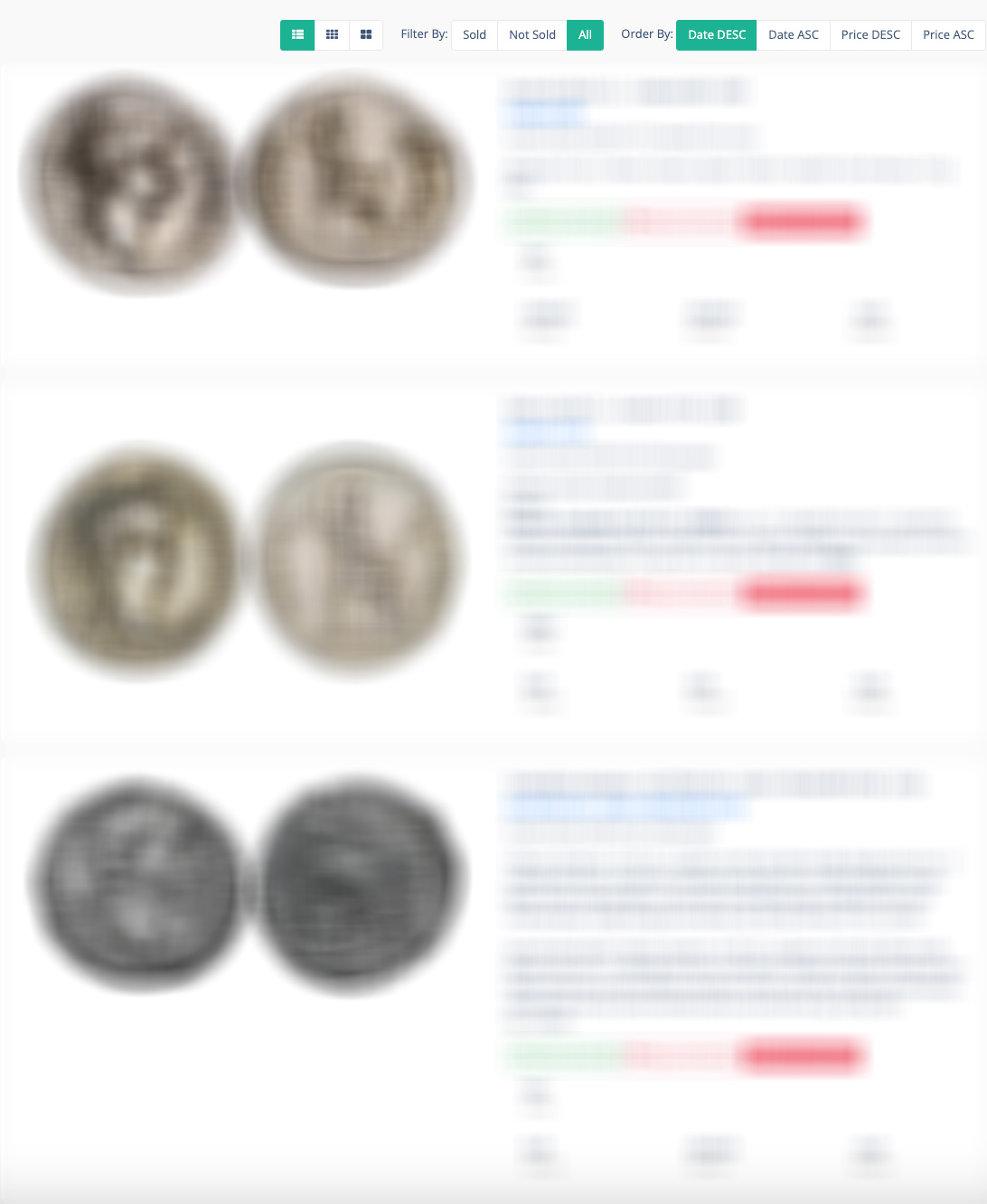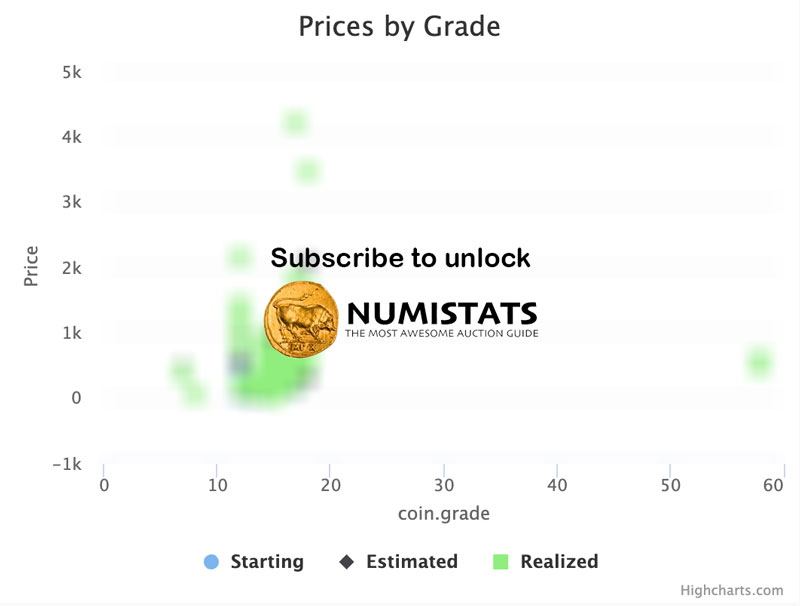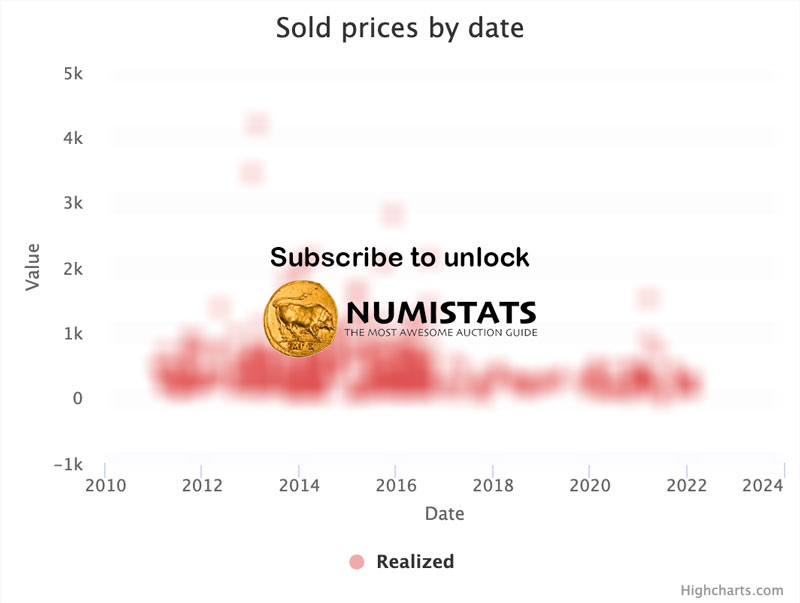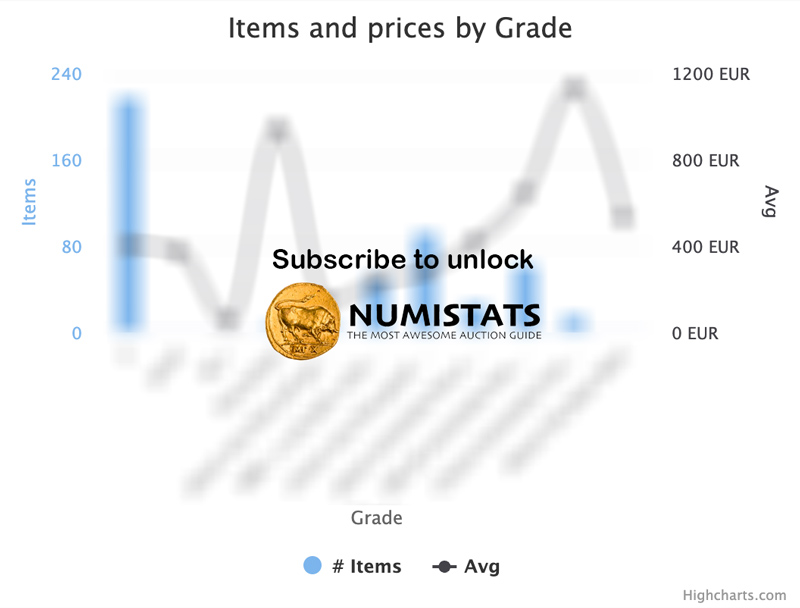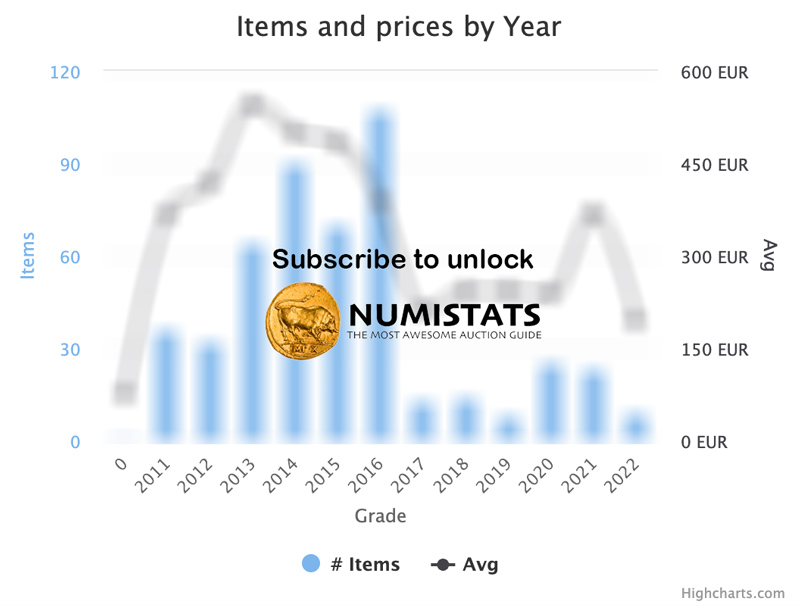Classical Numismatic Group, LLC - Triton XXVIII – Sessions 1-4 . 93

Greek
Category
Gallatin
R.IV/C.XII
Scavino
11
HGC 2
1299
SNG ANS
366
Dewing
884
de Luynes
1250
Gillet
658
SICILY, Syracuse. Dionysios I. 405-367 BC. AR Dekadrachm (34.5mm, 42.91 g, 12h). Reverse die signed by Euainetos. Struck circa 405-390 BC. Charioteer, wearing long chiton, holding kentron in extended right hand and reins in left, driving fast quadriga left; above, Nike, wearing long chiton, flying right, crowning charioteer with wreath held in her extended hands; below heavy exergual line, [military harness], shield, greaves, cuirass, and crested Attic helmet, all connected by a horizontal spear; [A]ΘΛA below / Head of Arethousa left, wearing wreath of grain ears, triple-pendant earring, and pearl necklace; ΣΥ-ΡΑ-ΚΟ-ΣΙΩ[Ν] behind hair, four dolphins swimming around, EY-AINE along lower edge. Gallatin dies R.IV/C.XII; Scavino 11; HGC 2, 1299; SNG ANS 366 = Ward 295 (same dies); Dewing 884 (same dies); de Luynes 1250 (same dies); Gillet 658 (this coin). Magnificent deep old cabinet tone, with golden hues around the devices, small die break on obverse. EF. Boldly struck, well centered, and lacking the usual die rust. One of the finest specimens of this iconic issue.
Ex Leu 50 (25 April 1990), lot 69; Charles Gillet (†1972) Collection, 658. Likely from the 1890 Santa Maria di Licodia Hoard (IGCH 2123).
The dekadrachms of Syracuse are widely and properly considered to rank among the most beautiful coins ever produced, but seldom do we encounter a surviving example that is as deeply struck, attractively toned and well-preserved as this specimen. Even more importantly, very seldom in the present day market can a dekadrachm be traced to the very spot and time it was rediscovered after spending more than two millennia in the ground. Such is the case with this spectacular Euainetos dekadrachm, which was part of a remarkable find on Sicily at Santa Maria di Licodia on the slopes of Mount Etna in 1890. Consisting of at least 81 coins, the trove contained no less than 67 Syracusan dekadrachms of the Kimon and Euainetos type. No less an archeologist than the renowned Sir Arthur Evans wrote an account of the treasure’s finding in the 1891 edition of Numismatic Chronicle (pp. 213–7). His marvelous account is worth quoting at length: “In January of last year [1890] a peasant digging in his plot of land at Santa Maria di Licodia, a small town that lies on the Westernmost spurs of Etna, found a pot containing over eighty silver coins, no less than sixty-seven of which were Syracusan dekadrachms or pentekontalitra. According to the account given to me, the deposit lay beneath a layer of lava. The coins were at once taken into Catania, where I saw them a few days afterwards, and was fortunate enough not only to be able to take down a summary record of the contents, but secure at least temporary possession of some of the most interesting specimens. A portion of the coins, perhaps owing to the action of the lava, had suffered considerably ... There were, however, among them about a score of ‘medallions’ in really brilliant condition....” The coins were quickly dispersed, many via Spink & Sons, which sold them via auction and private treaty into several notable collections, including those of John Ward, who later bequeathed them to J. P. Morgan and, through him, to the Metropolitan Museum of Art; Arthur S. Dewing, whose collection now resides at Harvard; Calouste Gulbenkian, which is now housed at the Gulbenkian Museum in Lisbon, Portugal. Due to the circumstances of the burial of the hoard, the coins all have a distinctive appearance, similar to that of the Boscoreale Roman aurei. Although no full inventory of the find was produced, the present coin has this distinctive appearance, and therefore likely is from the hoard. Description
Ex Leu 50 (25 April 1990), lot 69; Charles Gillet (†1972) Collection, 658. Likely from the 1890 Santa Maria di Licodia Hoard (IGCH 2123).
The dekadrachms of Syracuse are widely and properly considered to rank among the most beautiful coins ever produced, but seldom do we encounter a surviving example that is as deeply struck, attractively toned and well-preserved as this specimen. Even more importantly, very seldom in the present day market can a dekadrachm be traced to the very spot and time it was rediscovered after spending more than two millennia in the ground. Such is the case with this spectacular Euainetos dekadrachm, which was part of a remarkable find on Sicily at Santa Maria di Licodia on the slopes of Mount Etna in 1890. Consisting of at least 81 coins, the trove contained no less than 67 Syracusan dekadrachms of the Kimon and Euainetos type. No less an archeologist than the renowned Sir Arthur Evans wrote an account of the treasure’s finding in the 1891 edition of Numismatic Chronicle (pp. 213–7). His marvelous account is worth quoting at length: “In January of last year [1890] a peasant digging in his plot of land at Santa Maria di Licodia, a small town that lies on the Westernmost spurs of Etna, found a pot containing over eighty silver coins, no less than sixty-seven of which were Syracusan dekadrachms or pentekontalitra. According to the account given to me, the deposit lay beneath a layer of lava. The coins were at once taken into Catania, where I saw them a few days afterwards, and was fortunate enough not only to be able to take down a summary record of the contents, but secure at least temporary possession of some of the most interesting specimens. A portion of the coins, perhaps owing to the action of the lava, had suffered considerably ... There were, however, among them about a score of ‘medallions’ in really brilliant condition....” The coins were quickly dispersed, many via Spink & Sons, which sold them via auction and private treaty into several notable collections, including those of John Ward, who later bequeathed them to J. P. Morgan and, through him, to the Metropolitan Museum of Art; Arthur S. Dewing, whose collection now resides at Harvard; Calouste Gulbenkian, which is now housed at the Gulbenkian Museum in Lisbon, Portugal. Due to the circumstances of the burial of the hoard, the coins all have a distinctive appearance, similar to that of the Boscoreale Roman aurei. Although no full inventory of the find was produced, the present coin has this distinctive appearance, and therefore likely is from the hoard. Description
fine
Grade
57525.04 EUR
Starting
95875.07 EUR
Estimate
EUR
Realized
Sold (100%)
Unsold (0%)
